Craft Show Display 5 Minute Fix: Display vs. Stock
A common mistake craft show vendors make is treating their space like a stock room and trying to fit in as much as possible.
This approach can end up lowering the perceived value of your products and attracting the wrong type of shopper.
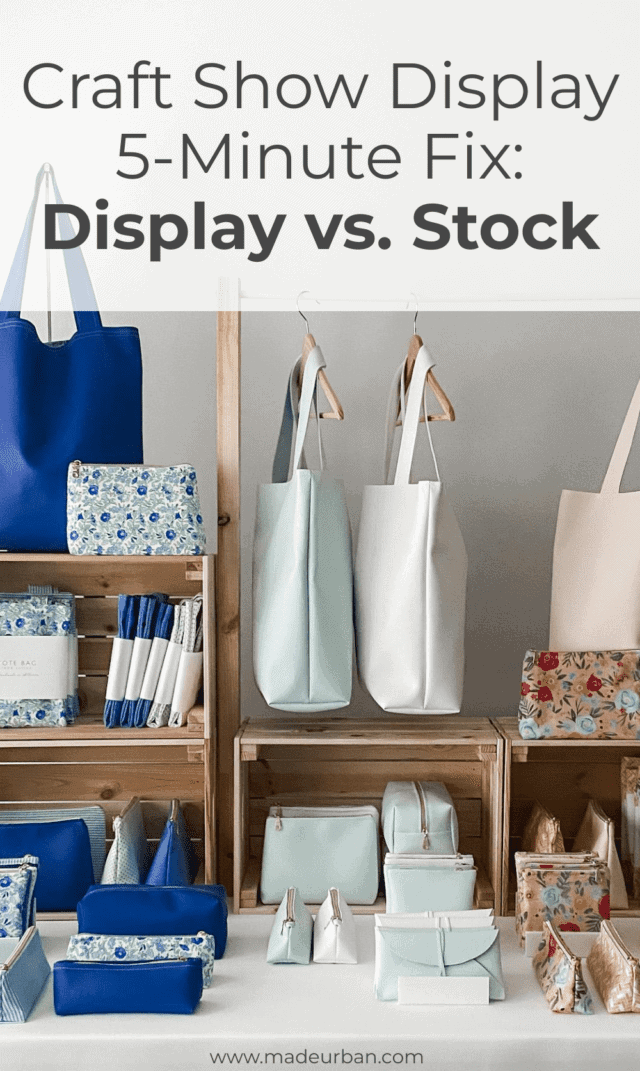
Imagine a few types of clothing stores:
Low Price
In a thrift shop, an off-price store (e.g. Winners, TJ Maxx, Marshalls), or a clearance section of a store, you’ll find almost every product side-hung. Fitting in as much stock as possible is the name of the game.
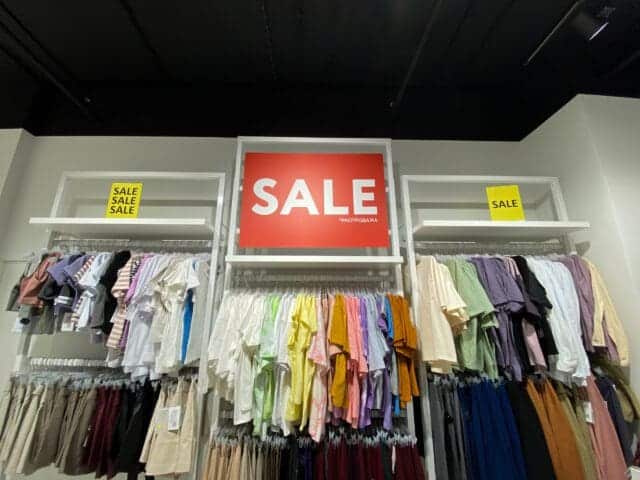
Mid-Price
In a mid-price range retail store, you’ll find clothing both “displayed” and “stocked”. Some key pieces will be displayed forward-facing so they catch the shopper’s attention, while other pieces will be side-hung, stacked, filed, etc. for shoppers to sift through.
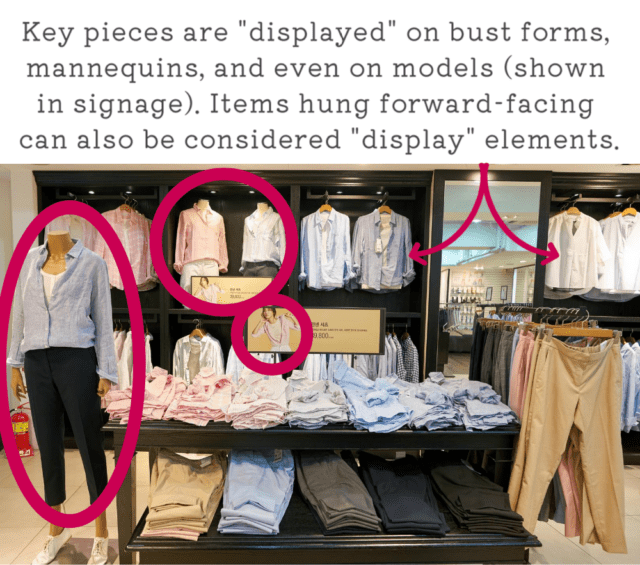
High-Price
If you imagine a high-end luxury boutique, there is very little “stock” on the sales floor. Most items are “displayed” and there may only be one of each size out, with additional stock kept in the back.
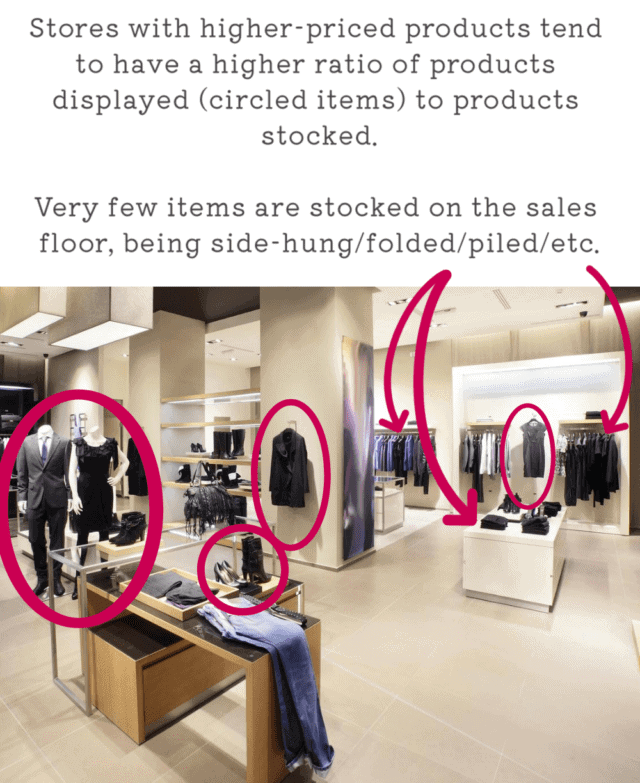
When a lot of stock is merchandised on the sales floor, it tends to correlate with lower prices.
So having a mix of products that are stocked as well as displayed is a good way to increase how high shoppers believe your prices should be.
Stocked Products vs. Displayed Products
Stocked products are set up in a way that requires the shopper to sift/sort/flip/etc. through the options.
Displayed products allow the shopper to see most of the product, without having to move or pick up anything.
Examples of stocked products in a retail store:
- Shirts side-hung on a rack
- Pants folded and stacked on a shelf
- Several necklaces hung on a peg of a jewelry rack
- Boxes of candles stacked on a table
- Etc.
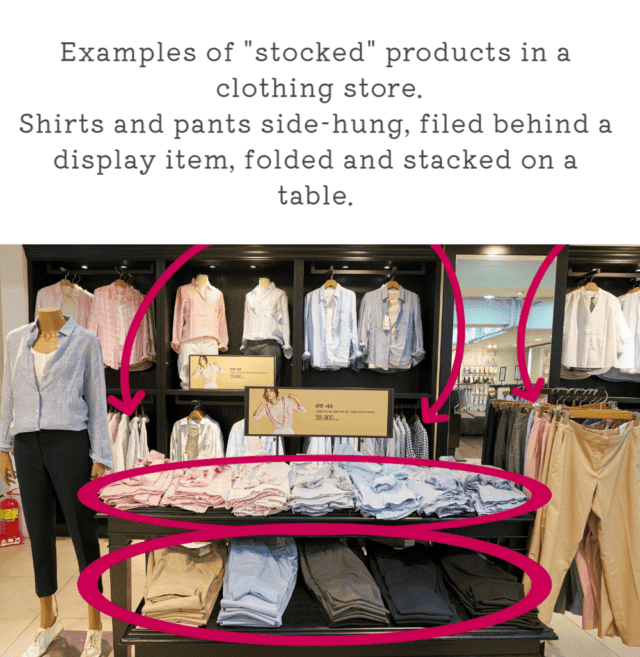
Examples of displayed products in a retail store:
- A shirt and pants displayed on a mannequin
- A necklace shown on a bust form or one necklace displayed in a case with it’s matching earrings, ring and bracelet
- One candle displayed outside of the box (so shoppers can smell it), or displayed with a bouquet of flowers and stack of books (as it might be displayed in a home).
How to “display” products at a craft show
The purpose of displaying products at a craft show is to:
- Break up stock & grab attention – if you think about a thrift store with rows and rows of tops side-hung, nothing catches your eye. It takes patience and determination to push shirt after shirt aside to try and find something of interest. A displayed product adds interest, which will keep the shopper engaged.
- Highlight products you want to sell (the most of) – every product cannot be displayed or given equal space on your craft show table. You must pick your favourites that you want to stand out. Displaying a few key items tells shoppers what’s most important on your table.
- Increase perceived value – just like a high-end boutique, the more display elements you incorporate into your setup, the more valuable and expensive your products will seem to shoppers.
- Encourage sales – not only do your displayed products say “I’m important” to shoppers, they can also help them imagine how they’ll use the product or how the product will make them feel. For example, a white candle displayed next to a white bowl full of lemons and a white tea towel will make shoppers think of a fresh and clean kitchen. You can also group like items together to encourage multi-item sales.
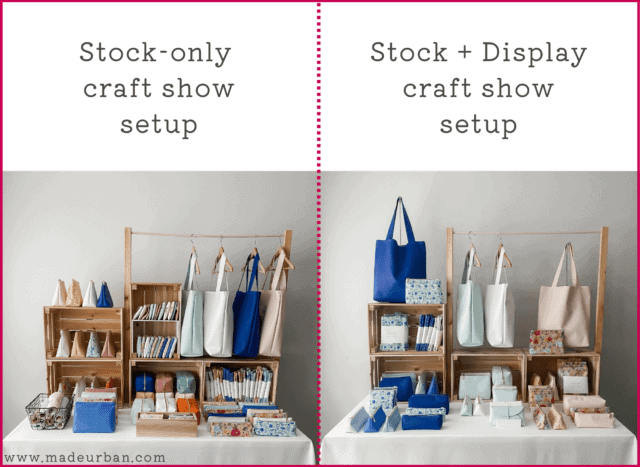
Step 1 – Edit
Your craft show table does not need to hold every product you’ve made or that you offer.
It’s a small boutique and you must be selective about what you display and stock.
Think about:
- The pieces you want to be known for
- The color stories you want to showcase
- The feeling or vibe you want to create
>> If you have a mix of bags, aprons, and baby bibs, make a choice; do you want to be an accessory business, a kitchen linen business, or a baby business? Dedicate the majority of your table to one category of products.
>> If you have a rainbow of colors, decide on 1 – 3 color stories to showcase.
>> If you have a mix of feminine, masculine, modern, classic, and eclectic pieces, decide on one direction to go in, and try to create that feeling/vibe/look throughout your display.
Remove items that don’t fit with the direction you’re going in and either “hide” those pieces behind other items, give them a small section on your table, or keep them behind your table.
Step 2 – Decide on key pieces
Every product cannot have a leading role in your craft show display. Some items must take on supporting or background roles.
Choose 1 – 5 key products you want to highlight. The smaller your space, the fewer key products you’ll have.
These key products might be:
- Bestsellers
- Higher priced/profit products
- Trending products
- Seasonal products
- New products
- Etc.
These products will be “displayed”.
To display your key pieces, you might have them:
- Forward-facing
- Sitting on their own
- Part of a composition (with complimenting products)
- At the highest point of your display
- On a bust form
- As a sample shoppers can taste/touch/smell (if your stock is packaged)
Displayed products should say “look at me, I’m important” and get shoppers to pay attention.
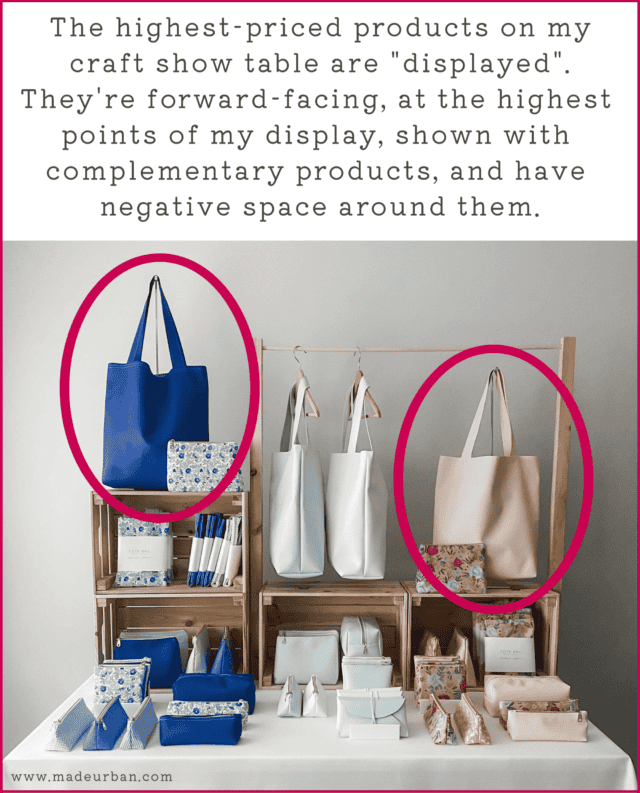
Step 3 – Alternate
Break up your craft show display by alternating stocked products with displayed products.
Displayed products act as a stop sign in your display. They get shoppers to stop scanning your table and focus on an important detail.
Remember, “displayed” products can simply be forward-facing products.
Generally speaking, the more “luxury” the brand, the more space should be dedicated to display.
The space will have limited stock, which creates scarcity (there are only a few items available) and makes items seem more expensive.
Any questions about “stocked” products vs. “displayed” products? Please comment below 🙂

Hey, I’m Erin 🙂 I write about small business and craft show techniques I’ve learned from being a small business owner for almost 2 decades, selling at dozens of craft shows, and earning a diploma in Visual Communication Design. I hope you find my advice helpful!

Displaying spices is hard to set up and be creative. Do you have any tips for that?
You might play around with dedicating more space to display and add a few props to help people imagine using your spices. In the summer, you might add a display section of your site that incorporates BBQ props (e.g. a flipper, apron, chef’s hat, maybe even a bucket of beer;) and a few of your best spices for BBQ-ing. If you’re allowed, you could even offer samples in this section. In the winter, those props might change to a roasting pan, oven mitts, a basket of root vegetables, and a bottle of red wine.
In this example, I would dedicate zone 1 to your display (here’s more info on zones if you’re not familiar: https://www.madeurban.com/blog/craft-show-table-layout-tips/), then “stock” your spices on the rest of your table.
I hope that helps!
~Erin
This article was invaluable. I weave items (many are one of a kind) for a local hospital once a year sale. Not sure how I can incorporate the wonderful ideas about displaying but I will certainly keep that in mind goin forward.
Thank you so much Julie! I hope the ideas help with your next event!
~Erin
I haven’t got a clue how to best display my greeting cards. Can you give some suggestions. Visual aids would be great. Thank you.
Hi Gitana,
I’ll keep greeting cards in mind for a future article.
~Erin
7Every post is helpful but this one is especially helpful to me.
Excellent advice. We may sometimes become anxious about selling on the day’ and want to make sure the customer must see all we have.
Thank you so much Karihma!
Absolutely! Nerves always play a factor…for me anyways 😉
~Erin
What if you are a jewelry designer and have lots of designs to show? Our products are laser-cut acrylic jewelry and accessories. It’s all very colorful and fun. We currently have our earrings displayed in cabinets that open up. The earrings are hung on a pegboard and the cabinets are open and displayed that way. Thoughts? We also have a couple of risers to showcase other products.
Hi Ginger!
I would suggest following the same steps outlined in this article. Some products (e.g. smaller products and product lines with more variation) will require more “stock” space on a table. But you should still be able to incorporate one display element.
That might be a piece of signage that’s a photo of your best-selling earrings shown on a model, with a pair of those earrings displayed in front of the photo and perhaps a prop that compliments the earrings.
I hope that helps!
~Erin
Thanks for all the information, very helpfull for me.
Can you please give measure about the boxes?
Hi Sabrina, the wood crates in the photos are about 18″ wide by 12″ high.
My question is, how much should I tell my customer? Should I display signage or tell customers that I have more stock/scents/options available or should I let them believe that stock is running out so they should grab what they like now?
Hi Brittanie,
I would suggest playing around with it and seeing what works best. I don’t like to go too heavy with signage (i.e. try to communicate too much info through signs), so if you already have several signs, you may find it better to tell shoppers as they’re browsing. When there’s too much text to read, most shoppers will skim and miss important info.
You’ll also have to get a sense from each shopper as to whether you should mention additional options or not.
Too much variation can make it hard for them to make a purchasing decision. So if they’re having trouble deciding between the options on your table, and then you say there are more options, it may become overwhelming.
If you chat with them and find out what type of scents they like, then you can determine if you have something on the table that aligns with their preferences or if you need to pull something out from behind the table.
I hope that helps!
~Erin
I would also love some tips on displaying handmade skincare and haircare products, props etc! Your idea for the spices business makes me want to visit their table already!